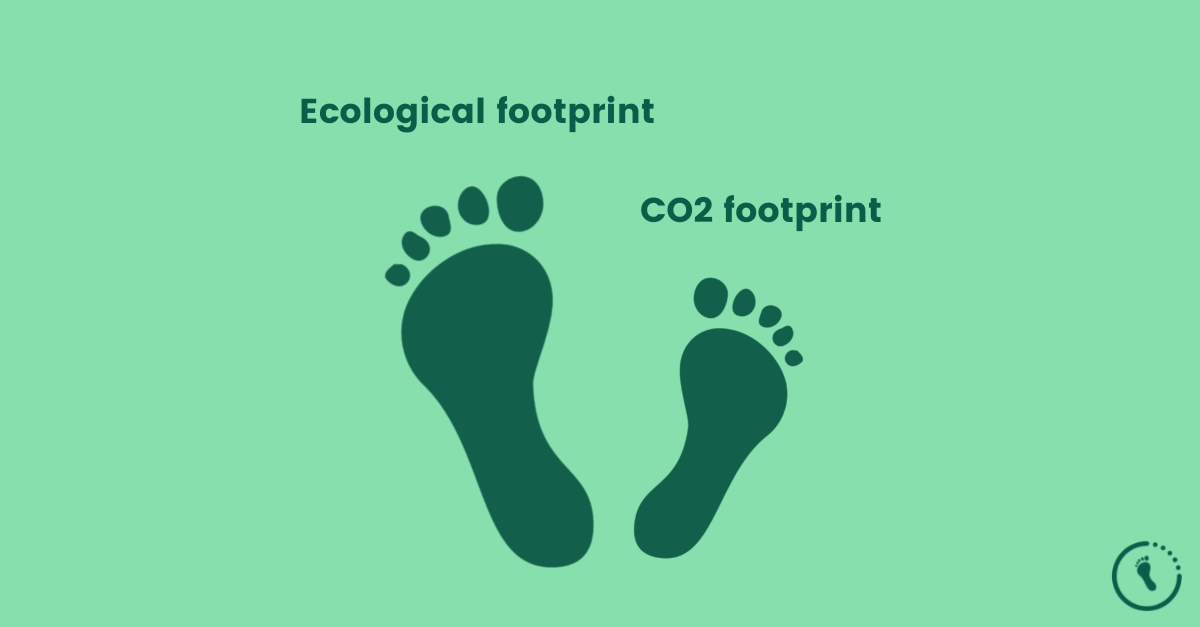Globally we live like we have 1.7 Earths, but we only have one. Our footprint is too big. Do you want to know how big your footprint is and how you can reduce it? Then it is important to know what the footprint exactly is and what the best way is to calculate it.
In the news, you hear a lot about our CO2 emissions and the Carbon Footprint. Maybe you have even used one of the many online carbon calculators. At The Footprint Challenge, we go one step further. We use the model of the Ecological Footprint to calculate the size of your footprint. In this article we explain why.
What is the Ecological Footprint?
The Ecological Footprint measures the space needed for our lifestyle and is calculated in hectares. It looks at how fast we consume resources and generate waste and CO2, compared to how fast nature can absorb our waste and CO2 and generate new resources.
Everything we do and consume contributes to the size of our footprint. What we eat and drink, how we live, what we wear, how we travel and so on. Our planet gives us everything we need, but we are currently taking more from the planet than the planet can naturally regenerate.
What is the Carbon Footprint?
The Carbon Footprint measures the amount of carbon that we are responsible for through our daily activities and is calculated in tonnes of CO2 emissions.
Ecological Footprint versus Carbon Footprint
On average, the Carbon Footprint makes up 60% of the ecological footprint. That means that the Carbon Footprint simply does not represent your entire impact. The other 40% is mostly the impact of land use for agriculture.
While 60% is a big and important part, we believe it’s important to educate people on the full impact of their lifestyle and help them to create a beautiful and sustainable life, that’s truly within the carrying capacity of our planet. We believe that the Ecological Footprint is the most effective and comprehensive model to do this.
To measure is to know
Our 40-day Footprint Challenge starts with the question: “How big is yours?” To answer this question, you start by taking our Footprint Scan. By answering questions about your lifestyle, you will discover how big your Ecological Footprint is and you will gain insight into how it is distributed across different areas such as food, transport and energy and waste. This way you can see exactly in which areas you have the most impact and you can start to effectively reduce your footprint.
Origin of the Ecological Footprint
The concept of the Ecological Footprint was created in the early 1990s by Mathis Wackernagel and William Rees. In 2003 Mathis Wackernagel co-founded the Global Footprint Network, an independent research institute that develops and promotes tools for advancing sustainability. In this video he explains it himself.
A closer look at the Ecological Footprint
As Mathis Wackernagel explains in the video above; “The Ecological Footprint answers a central question: How much nature do we have, and how much do we use? We measure this in ecological productive areas. How much area is there available (biocapacity) and how much do we use (our ecological footprint)?”
We have one planet and not all areas are biologically productive. If we add up all biologically productive areas like built up land (residential land and industrial land), forests, cropland, grassland and fisheries and divide it by the amount of people on our planet we would currently have 1.6 ha space available per person. But we live like we have 2.7 ha each. This means the planet can’t keep up with our lifestyle and we are using more space than we actually have. We live like we have 1.7 planets.
Time for action!
Since 2014 The Footprint Challenge has been helping people to reduce their footprint in an effective and sustainable way. To increase our impact we mostly work with organisations and their employees, so we can make a positive impact at home and at work. Are you ready to challenge your employees and help reach the global climate goals? Reach out to us!


